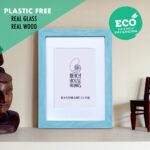I. Understanding Upcycled Food: Definition and Benefits
II. Examples of Upcycled Food Products
III. The Environmental Impact of Upcycling Food Waste
Understanding Upcycled Food: Definition and Benefits
Have you ever heard of upcycled food? It’s a term that’s gaining traction in our conversations about sustainability and food waste. But what exactly does it mean? Let’s break it down in a way that’s easy to digest!
What is Upcycled Food?
At its core, upcycled food refers to products made from ingredients that would otherwise go to waste. This could be anything from imperfect fruits and vegetables to leftover grains and by-products from food manufacturing. The beauty of upcycling is that it transforms these “discarded” items into something delicious, nutritious, and valuable.
Think of it like giving food a second chance; it’s not just about reducing waste, but also about enhancing the value of what we consume. When producers create upcycled products, they are essentially taking what might be overlooked or tossed aside and turning it into something fabulous. It’s a win-win for both the environment and our taste buds!
Benefits of Upcycled Food
So, why should we care about upcycled food? Here are some compelling reasons:
- Reducing Food Waste: One-third of all food produced globally is wasted. By upcycling, we can significantly cut down on this waste, ensuring that valuable resources aren’t going to landfills.
- Environmental Impact: Less waste means fewer greenhouse gas emissions. Food waste in landfills produces methane, a potent greenhouse gas. Upcycling helps mitigate this impact.
- Nutritional Value: Many upcycled foods retain or even enhance their nutritional qualities. For instance, using beet pulp in snacks not only reduces waste but also adds fiber and nutrients!
- Supporting Local Economies: Upcycled food often comes from local producers and businesses. By choosing these products, you contribute to local economies and support innovative practices in food production.
- Creativity in Cooking: Embracing upcycled food inspires creativity in the kitchen. It challenges us to think outside the box and use ingredients in new and exciting ways.
Getting Involved
Feeling inspired? You might be wondering how you can get involved in the upcycling movement. Here are a few simple steps:
- Choose Upcycled Products: Look for brands that offer upcycled snacks, beverages, and more at your local grocery store.
- DIY Upcycling: Get creative in your own kitchen! Consider using vegetable scraps for broth or repurposing stale bread into croutons or breadcrumbs.
- Spread the Word: Share your knowledge about upcycled food with friends and family. The more people know, the bigger impact we can make together!
In conclusion, upcycled food is not just a trend; it’s a thoughtful response to our food system’s challenges. By understanding what it is and embracing the benefits, we can all take part in creating a more sustainable future. So, the next time you spot an upcycled product, just know that you’re making a choice that’s good for both your plate and our planet!
Examples of Upcycled Food Products
Alright, let’s dive into the delicious world of upcycled food products! If you’re wondering what exactly this means, it’s all about transforming food scraps and by-products into tasty and nutritious items. Not only does this help reduce food waste, but it also opens up new culinary possibilities. So, what are some fantastic examples of upcycled foods you might encounter in your grocery store or local farmer’s market? Let’s explore!
1. Upcycled Snacks
You’ve probably seen snacks made from ingredients you’d never guess! For instance, crispy snacks made from vegetable peels or fruit chips made from surplus fruits are popping up everywhere. These snacks are not just good for the planet; they’re also incredibly tasty! Think about it: those delicious apple chips made from leftover apples that didn’t make the grade for selling? They’re a win-win!
2. Flour Alternatives
Have you ever heard of banana flour or chickpea flour? These are made from upcycling bananas that are too ripe or chickpeas from the canning process. They’re packed with fiber and nutrients! Plus, they can add unique flavors and textures to your favorite recipes. Imagine baking a banana bread with banana flour—now that’s a treat!
3. Craft Beer and Spirits
Here’s a fun one: have you ever tasted a beer brewed from leftover bread? Some innovative breweries are using stale bread to create unique craft beers. Not only does this reduce waste, but it also results in a complex flavor profile you won’t find anywhere else. And it doesn’t stop there; distilleries are also creating spirits from surplus fruits and grains. So, your next drink might just have a sustainable twist!
4. Nut Butters
If you’re a fan of nut butters, you’ll love this: some brands are making nut butters from nuts that are considered imperfect or those that didn’t sell in time. These nut butters are just as delicious and often come at a better price than their “perfect” counterparts. Plus, you’re doing your part to help cut down on food waste—talk about a tasty way to make a difference!
5. Upcycled Sauces and Spreads
Have you ever thought about your favorite sauces and spreads? Many brands are now making ketchup and sauces from overripe tomatoes or jams from fruits that are just past their prime. These products are not only a fantastic way to enjoy flavors that are rich and complex, but they also contribute to reducing food loss. So, next time you’re at the store, look for those upcycled options!
6. Pet Food
Even our furry friends can benefit from upcycled food! Some pet food brands are using ingredients that are not suitable for human consumption but still packed with nutrients. Think about it: that leftover pumpkin from your fall decorations could be turned into a nutritious treat for your dog. It’s a thoughtful way to keep waste down while treating your pet to something special.
So there you have it! The world of upcycled food products is full of creativity and sustainability. By choosing these innovative options, you’re not just treating your taste buds but also making a positive impact on our planet. Next time you shop, keep an eye out for these upcycled gems—you might just discover a new favorite!
The Environmental Impact of Upcycling Food Waste
Have you ever wondered what happens to food that doesn’t quite make it to your plate? It’s a staggering reality that a significant portion of food produced worldwide ends up as waste. This is where the magic of upcycling food comes in! Upcycling not only helps reduce waste but also offers some fantastic environmental benefits. Let’s dive into how upcycling can make a positive impact on our planet.
1. Reducing Food Waste
First and foremost, upcycling food helps tackle the enormous issue of food waste. According to the Food and Agriculture Organization (FAO), approximately one-third of all food produced globally is wasted. This waste contributes to greenhouse gas emissions, as decomposing food in landfills releases methane—a gas much more potent than carbon dioxide. By upcycling, we can significantly reduce the amount of food that ends up in landfills, which is a win-win for the environment!
2. Conserving Resources
Every time we throw away food, we’re not just wasting the food itself; we’re also wasting the resources that went into producing it. This includes:
- Water: It takes a lot of water to grow crops. When food is wasted, all that water is wasted too.
- Energy: From farming to transportation, producing food requires energy. Wasted food means wasted energy.
- Labor: Farmers, workers, and suppliers put in a tremendous amount of effort to bring food to our tables. Wasting it is a disservice to their hard work.
Upcycling helps us utilize these abandoned resources effectively. By creating new products from food waste, we’re making sure that the energy, water, and labor invested in those foods are not in vain.
3. Promoting Sustainable Practices
Embracing upcycled food encourages a shift towards more sustainable agricultural and business practices. When companies focus on upcycling, they are often compelled to:
- Innovate: Businesses start to think outside the box, creating new and exciting products that use ingredients that might otherwise be wasted.
- Educate: They may also engage in consumer education, raising awareness about food waste and sustainability.
- Collaborate: Organizations often team up with local farmers and suppliers to source food waste, fostering community connections and supporting local economies.
By choosing upcycled products, consumers can support these sustainable practices and encourage more businesses to adopt similar approaches.
4. Encouraging Circular Economy
Upcycling food waste plays a crucial role in promoting a circular economy. This concept focuses on keeping resources in use for as long as possible, minimizing waste and making the most of our resources. When we upcycle food, we turn what would be waste into valuable products, closing the loop in the food system.
In conclusion, upcycling food waste isn’t just a trendy concept; it has real, measurable benefits for our environment. By reducing food waste, conserving resources, promoting sustainable practices, and encouraging a circular economy, upcycling is a powerful way to make a positive impact on our planet. So next time you come across an upcycled food product, you can feel good knowing that you’re contributing to a more sustainable future!










Comments